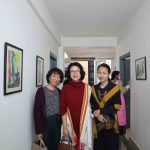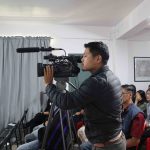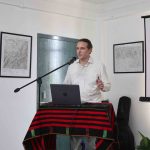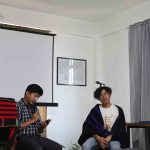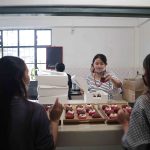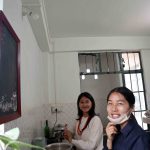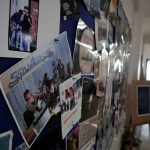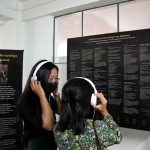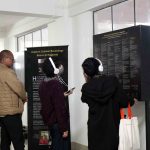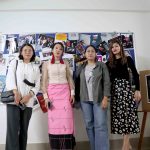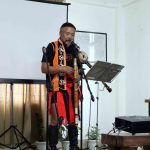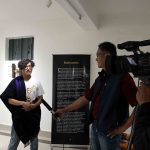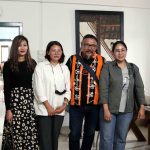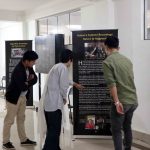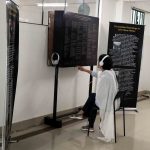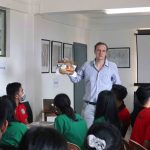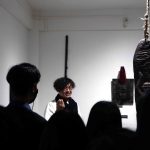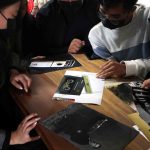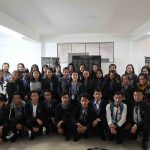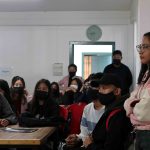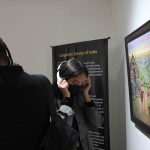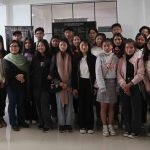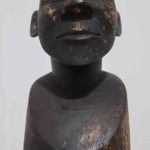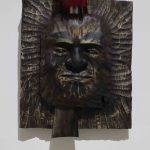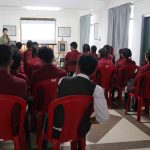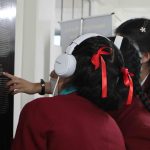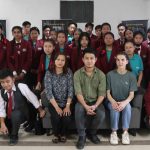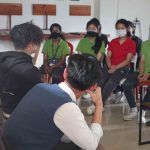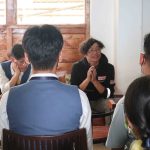From 23 April to 7 May 2022, the Highland Institute hosted the exhibition “Naga Ancestral Voices: Songs, Stories, Beliefs”, thematising the changing soundscapes of Nagaland. Based on the research project “Recirculating J. H. Hutton’s Recordings in Nagaland”, the exhibition was organised by interns from Kohima Science College, staff and fellows of the Highland Institute, and project lead Dr Christian Poske. Core pieces of the exhibition were the cylinder recordings of John Henry Hutton (1885-1968) from 1914-19, provided by the Pitt Rivers Museum Oxford, and recordings of Naga traditional music from 2004–2010, made by the German recordist Thomas Kaiser and provided by the Ethnographic Museum Zurich, which were exhibited on two locally manufactured soundboards.
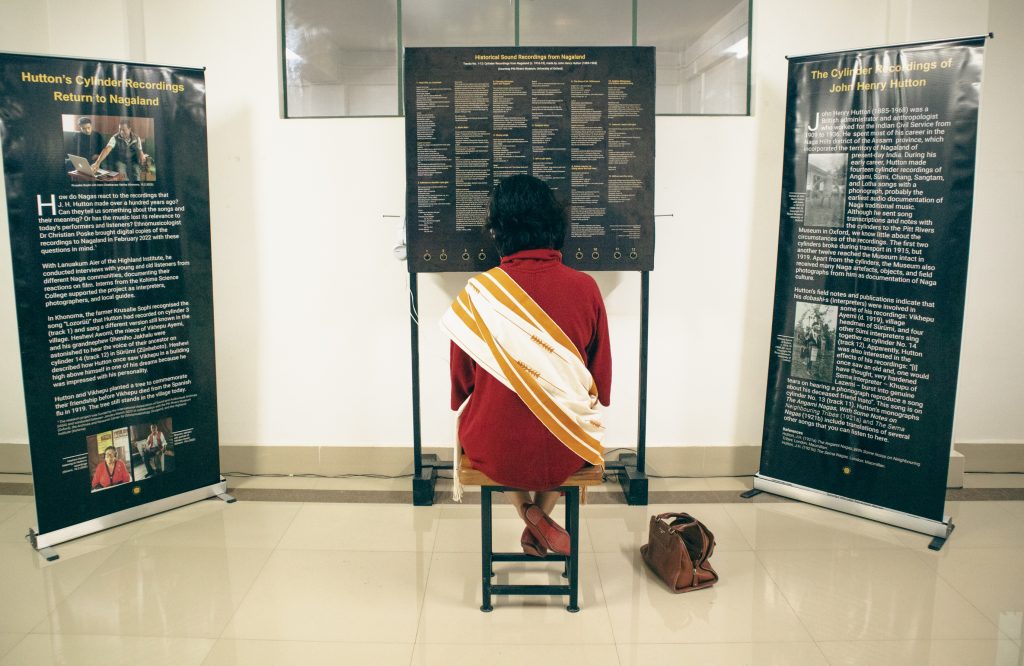
(Photo Courtesy: Esther Kauffmann)
The exhibition also featured three sound recordings of Naga speakers from the Linguistic Survey of India (Grierson, 1903), provided by the British Library Sound Archive. These sound recordings were accompanied by pieces of contemporary visual art revolving around the topics of Naga music, religion, and folklore, designed by the Lotha artist Mhao Aaron Odyuo of The Art Village Kohima. Amongst others, his artworks included an oversized replica of a bullroarer, an ancient musical instrument to which the Nagas ascribed supernatural powers, and a painting based on the Bible parable of the prodigal son, a text that was used to collect language samples during the Linguistic Survey of India. A large pinboard thematised the contemporary soundscapes of Nagaland with ephemera of modern Naga music, including band photos, CD covers, flyers, posters, and concert tickets.
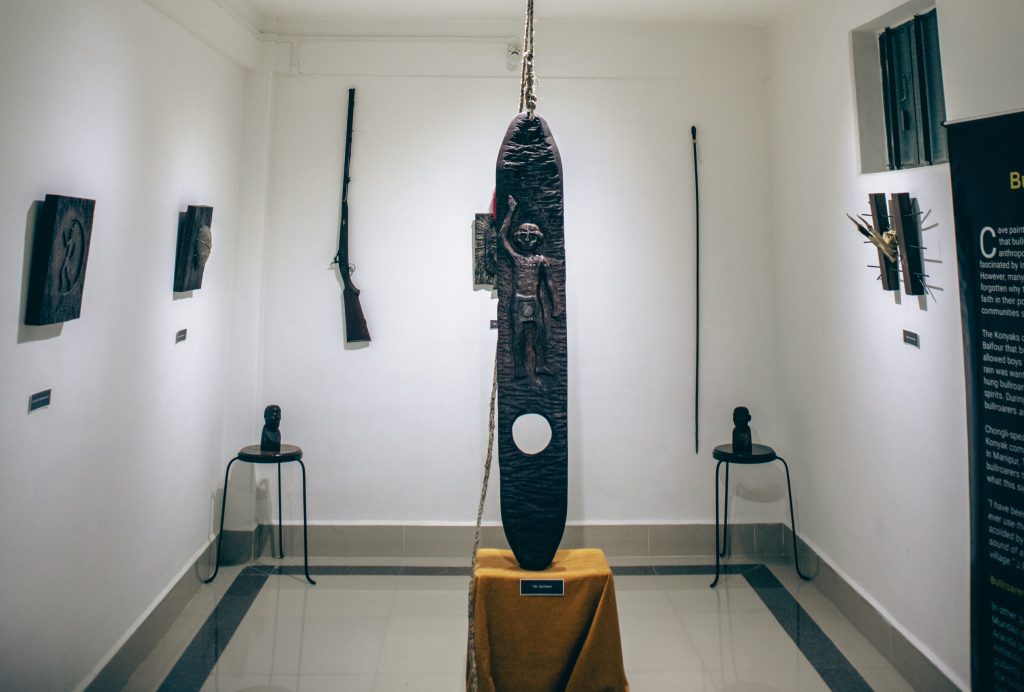
(Photo Courtesy: Esther Kauffmann)
The program of the opening day attracted many visitors, with talks by the Naga scholar Rhelo Kenye and Dr Christian Poske, an interview with Mhao Aaron Odyuo, and a performance by the Tangkhul Naga musician and Padma Shri recipient Guru Rewben Mashangva, who came from Imphal to present Naga traditional instrumental music as well as own compositions.
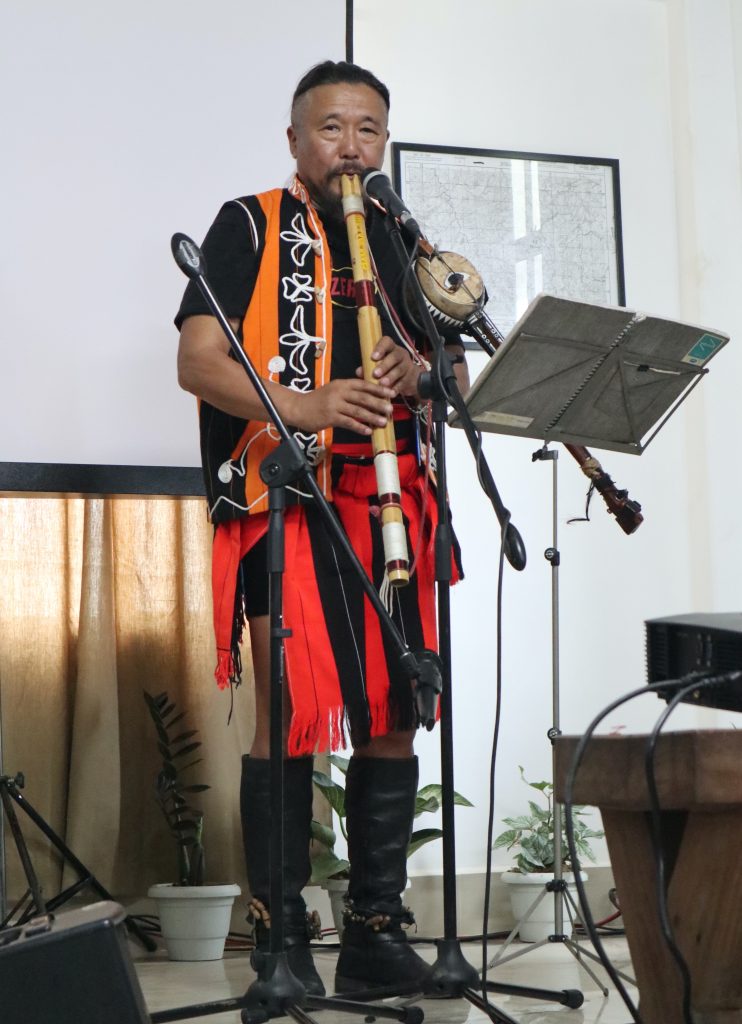
(Photo Courtesy: Esther Kauffmann)
A video recording of the talks and interviews of the opening day is accessible here and a report by The Morung Express is here. During the two weeks of the exhibition, the Highland Institute also hosted five workshops for excursions of school and college students from Kohima and its surroundings. These workshops included lecture presentations about the project and group activities such as a song quiz that turned out to be a favourite among students.

(Photo Courtesy: Esther Kauffmann)
Through these events, the exhibition found a good resonance with visitors, who appreciated it as an opportunity to learn about Naga traditional music and its cultural background. Comments from the guest book included:
“Wonderful exhibition. Very touched by the homecoming of old voices.”
“Very inspiring exhibition. Thank you.”
“Another side of our story so beautifully captured, told, and recorded.”
“Very exciting and interesting.”
“Extremely impressed with the work displayed. It’s a beautiful reminder of our rich culture.”
“A great initiative.”
References:
Grierson, G.A. (ed.) (1903) Linguistic Survey of India, Vol. III: Tibeto-Burman Family, Part II: Specimens of the Bodo, Nāgā, and Kachin Groups. Calcutta: Office of the Superintendent, Government Printing, India.


